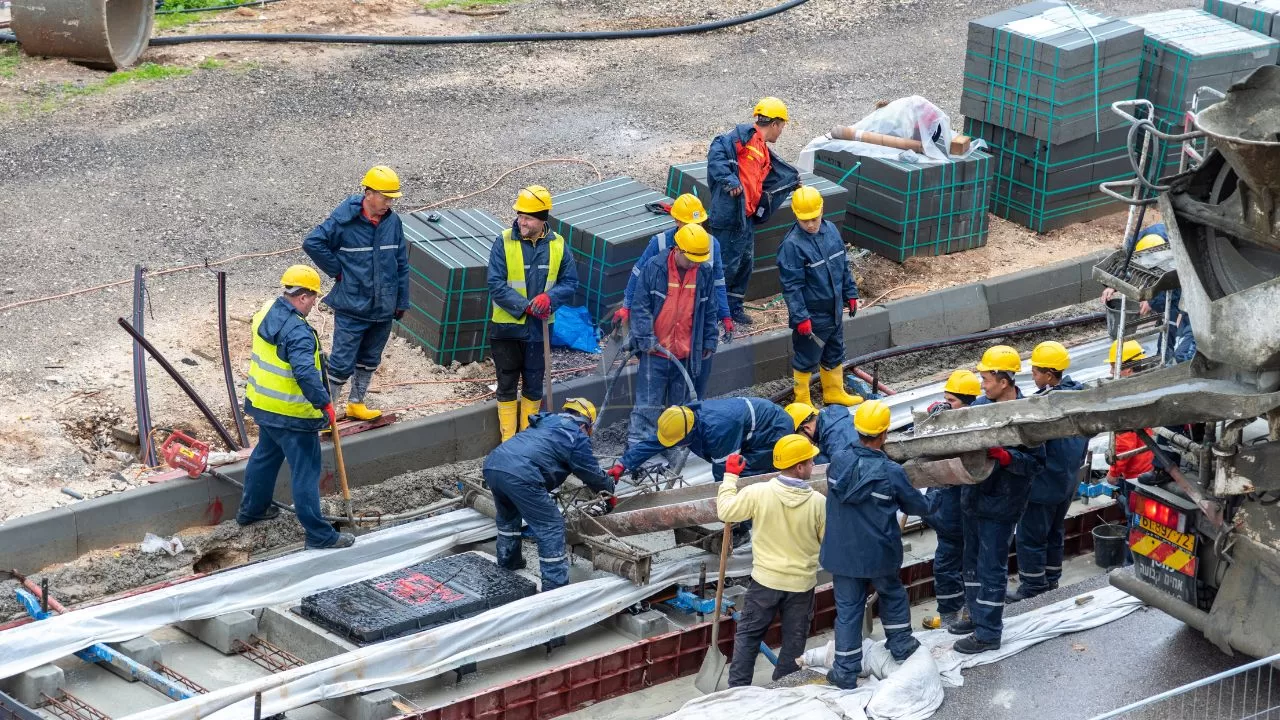Components of railway track are rail section, sleepers, ballast, rail fastenings and subgrade and embankments. I will walk you through each of them in detail. You will get to learn about the functions of rails, functions of sleepers, functions of ballast and about fastening of railway.
Without any due, let’s jump right on to it.
1. Rail sections- Important among all components of railway track
The rail provide a hard, smooth and unchanging surface for the passage of heavy moving loads. Rails are made of high carbon steel to withstand wear and tear. Flat footed rails are mostly used in railway track. I will tell you the major functions of rails now.
Function of rails
- Rails provide a continuous and level surface for the movement of the trains with minimum friction with steel wheels of the rolling stock
- Rails provide strength, durability and lateral guidance to the track
- Rails transmit the axle load to sleepers, which transfer the same load to the underlying ballast and formation
- Rails bear the stresses developed due to heavy vertical loads, breaking forces and temperature variance.
So, that’s it about the rail sections and the important functions of rails. Let’s move on to the second member in the list of components of railway track.
2. Sleepers

The support which keeps the rails apart at required distance, supports the rail and distribute the load to the ballast are called as sleepers. Sleepers are of different materials such as wood, steel, cast_iron, RCC and Prestressed concrete
Time to peep into the major functions of sleepers.
Functions of sleepers
The important functions of sleepers are,
- To hold the rails to proper gauge in all situations. That is, exact gauge along straights and flat curves, slightly loose on sharp curves and slightly tight in diamond crossings.
- To support the rails firmly and evenly throughout
- To distribute the load transmitted through rails over large area of ballast underneath or to the bridge girders.
- To hold the rails to proper level in turnouts and crossovers, and at 1 in 20 in ward slope along straight tracks
- To provide an elastic medium between the rails and ballast and also to absorb the vibrations caused due to moving axle loads
- To maintain proper alignment of the track. On curves proper cant is provided by raising the outer rail and tamping the required quantity of ballast below the rails
- To provide the general stability of the permanent way throughout
- To provide the insulation of track for the electrified for signaling
- To provide easy replacement of the rail fastenings without any serious traffic disturbances
So, you grasped the knowledge on the functions of sleepers and a bit of information about sleepers. Now, I’m going to introduce you another member of components of railway track. Guess who? Rail fastenings (Ya, as I rightly written below).
3. Fastening in Railway-Rigid member of components of railway track

Fastening in railway is used to connect the rails and sleepers together in their proper positions. The fixtures and fastening used in track fittings are,
- Fish plates
- Spike
- Bolts
- Chairs
- Blocks
- Keys
- Plates
Cool. I will close the chapter of rail fastenings by throwing some light to the functions of rail fastenings.
Functions of Fastening in Railway
Fastening in railway has the following functions.
- Join the rails end to end to form full length of track
- To fix the rails to sleepers
- To maintain the correct alignment of the track
- To provide proper expansion gap between rails
- To maintain the required tilt of rails
- To set the points and crossings in proper position
So, that topic too is over. Next we are going to study about ballast, functions of ballast in particular.
4. Ballast

Ballast is the broken stone placed or packed below the sleepers to transmit load from sleeper to the formation and at the same time allowing drainage of the track.
To better understand about them, let’s have a look at the main functions of ballast.
Functions of ballast
The major functions of ballast are,
- To provide firm and level bed for the sleepers to rest on
- To allow for maintaining correct track level without disturbing the rail road bed
- To drain off the water quickly and to keep the sleepers in dry conditions
- To discourage the growth of vegetation
- To protect the surface of formation and to form an elastic bed
- To hold the sleepers in position during the passage of trains
- To transmit and distribute the loads from the sleepers to the formation
- To provide lateral stability to the track as a whole
Almost at the end of the journey. I will give you a snippet of information about the last member of components of railway track.
5. Subgrade and embankment- last member of components of railway track
Subgrade is the normally occurring ground which when prepared to receive the blast and track is called formation
In a permanent way, rails are joined either by welding or by using fish plates and are fixed with sleepers by using different types of fastenings. Sleepers are properly placed and packed with ballast. Ballast is placed on the prepared subgrade called formation. So, that’s where the importance of subgrade is.
So, the article was an introduction to the different components of railway track. We will figure out more in the upcoming article.
Let me know if you find the article useful in the comments.
MUST READ: Intelligent transportation system: A comprehensive approach to its components
Have fun learning!


it’s very useful contents
Good Afternoon,
We are interested in sourcing the below list of parts urgently, please can we get confirmation if these are available;
Regards
DDBO